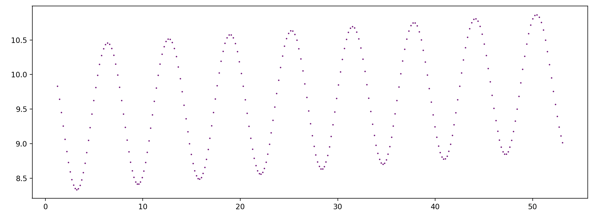
Experimenting with using basic Python to visualize a simple differential equation - a simple harmonic motion pendulum with some air resistance using different initial conditions:
$$ d^2θ/dt^2 = - μ * (dθ/dt) - (g/L) * sin(θ) $$
import numpy as np
from matplotlib import pyplot as plt
g=9.8 # Gravity
L=1 # Pendulum Length
mu = 0.1 # Friction Coefficient
n = 10000 # Number of dt Time Steps
t = np.pi / 3 # Initial Condition (Theta / "position")
td = 1 # Initial Condition (dTheta / "velocity")
dt = 0.02 # Time Differential
# set up figure
fig = plt.figure()
ax = fig.add_subplot()
for i in range(n): # For each dt increment
tdd = -mu * td - (g/L) * np.sin(t) # Calculate d2Theta (second derivative)
td = td + tdd*dt # Approximate dTheta using d2Theta
t = t + td*dt # Approximate theta using dTheta
# Plot Theta "Position" (X-axis) vs. dTheta "Velocity" (Y-Axis)
ax.plot(t,td,marker="o", markersize=1, markeredgecolor="purple", markerfacecolor="green")
plt.pause(0.001)
μ = 0.5, dθ/dt = 1

μ = 0.5, dθ/dt = 10

μ = 0.1, dθ/dt = 10
